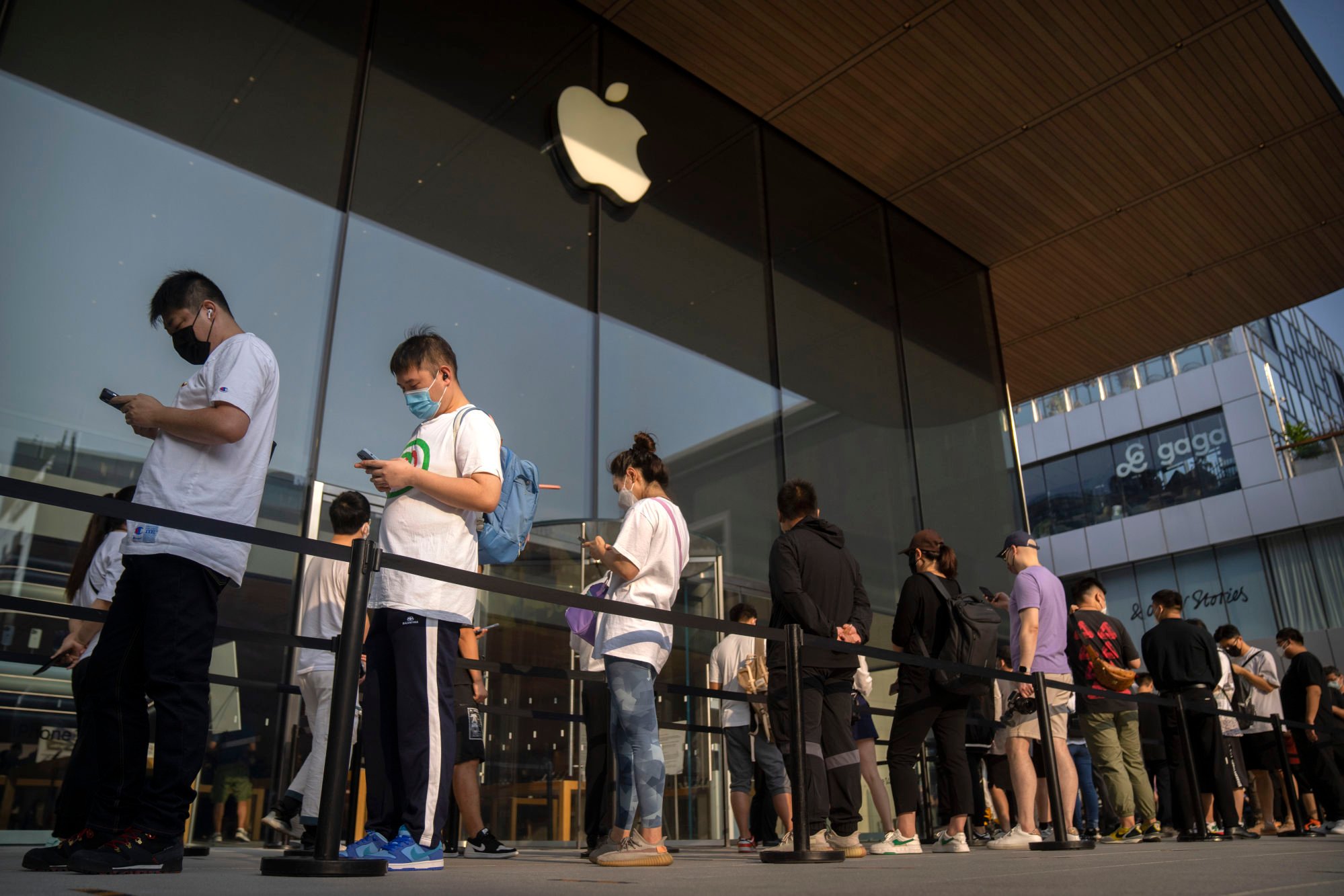
China’s Covid protests are not the whole reason for Apple’s move to India
- India’s large young population and growing manufacturing capabilities will ensure it has a place in the global technology supply chain
- Notwithstanding its handling of the pandemic and geopolitical tensions, China’s challenge of an ageing population and economic slowdown remains
First, let us examine China’s rise in the global technology supply chain. Apple’s growth in China has been a good reflection of China’s growth. Starting in the mid-2000s, Apple gradually moved its manufacturing to China to take advantage of its demographic dividends and maturing manufacturing capability.
China was a highly cost-efficient production base because of the more affordable labour supply, and the efficiency and quality of the workforce. In late 2009, after manufacturing its products in China for a few years, Apple began marketing the iPhone there.
In 2021, Apple generated US$68.3 billion from China, or 18.7 per cent of total revenue, as production sites in China assembled 36 per cent of Apple’s products.

What lessons can be learned from Apple’s success in China? First, demographic dividends ensure the supply of affordable labour for manufacturing. Second, mature supply side infrastructure, as represented by Foxconn in China, ensure manufacturing efficiency and quality. These two factors had attracted Apple to China.
In addition, China’s rapidly growing economy created a rapidly growing consumer market for Apple. This third factor encouraged Apple to stay and increase its investment in China. But with China’s ageing population and economic slowdown, this winning formula may no longer work as effectively.
China has participated in the global supply chain since entering the World Trade Organization in 2001. At the time, the median age of China’s population was 28.9; now, it is 38.4. In comparison, the current median age of India’s population is 28.4.
One could argue that China has run out of steam demographically, whereas India is just getting started. This gives Apple, and other technology companies, a strong incentive to move to India for a more affordable labour force.
In this regard, Indian Prime Minister Narendra Modi has launched the “Make in India” programme, with the aim of creating 100 million jobs in manufacturing. As manufacturing employment grows, India’s display panel market is projected to grow from US$7 billion in 2021 to US$15 billion in 2025, for example.
Let’s also look at economic growth. In 2001, China’s gross domestic product growth was 8.3 per cent. This year, its GDP growth is projected to slow to 4.3 per cent. In comparison, India’s GDP growth for 2021 was 8.9 per cent, close to China’s in 2001. Today, Apple is selling about 7 million iPhones a year in India but considering the potential that India’s young population represents, now is a good time for Apple to increase its stakes in India.
Given these factors, it makes sense for Apple to apply its winning formula for China to the up-and-coming market in India. Besides, Apple’s plans to move to India are not unique.
There is one thing India can learn from China’s rise in the global technology supply chain over the past two decades. Some of the start-ups that emerged then, including Alibaba and Huawei, are now tech giants.
Now is a perfect time for India to nurture an ecosystem for start-ups. After all, New Delhi should not be satisfied with being a manufacturing base and consumer market for existing tech players like Apple.
Dr Shaoshan Liu is CEO of PerceptIn and has commercially deployed autonomous micromobility services in the US, Europe, Japan and China


